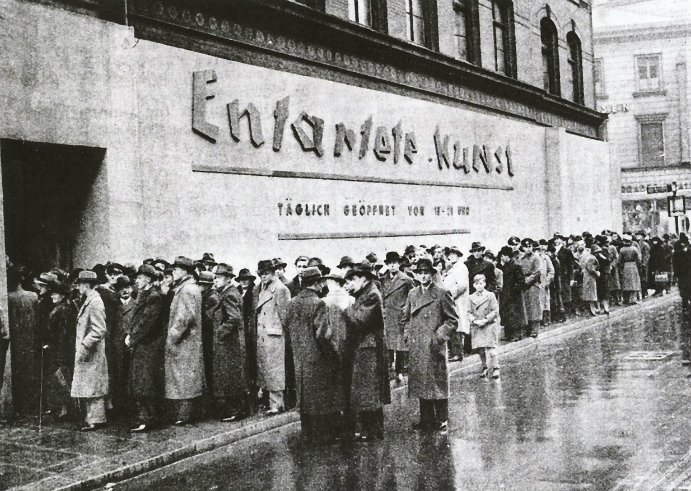The Gurlitt Case And The Hungarian Way Of Restitution
RESTITUTION
Can the past be clarified without professional staff and publicity?
| Mélyi József |
2013-12-27 14:15 |
The German press published the fact that in February 2012 1280 pieces of artwork were seized in a flat in Munich by representatives of the Augsburg public prosecutors office. From early November several articles were published about the secret the collection of Cornelius Gurlitt. As a moral lesson it can already be stated that the past is much deeper than ever it was thought, the future (in Germany at least) can be formed by well-reasoned legal regulations.

In Hitler’s Germany crowds wanted to see „bastard art”
Photo: Openculture.com
Thanks to the German press the complicated story of Hildebrand Gurlitt, the father, who was given the assignment by the Nazis to purchasing and selling the works of the so called „bastard art”, and who worked as the main procurer in France for the planned Führermuseum It is only now that the question of the whereabouts of the collections of important Nazi figures can be answered. The malpractice of both German states during the communist era is now revealed, facts of how both Western and Eastern German authorities covered all the tracks of certain collections as far as their origin faded away. The articles published these past weeks give all the details of the history of the legal regulation, referring to the Washington treaty, mentioning the Dutch and Austrian examples. More about the Austrian example here! The journalists accuse the state for its inability, lawyers and researchers resent the fact that the state has not used the professional staff so far and did not make public the whole case a year ago.
All the interested parties agree that without professional staff and publicity neither the past, nor the future can be clear. Just an example: on the site Lost Art, established in Magdeburg, 36 thousand pieces were searched as stolen works-of-art in 2002. Since the Gurlitt case came to light the website receives more than 1 million visits a day. The bureau does the documentation but just and fair solutions can be found only by law. The problems have not only legal or political sides but ethical characteristics as well. Fort hat very reason 10 years ago the German state established an advisory board, which deals with cases of stolen or expropriated art pieces and collections during the Nazi era. Members of this board are art historians, historians and lawyers, the former chairmen of the Constitutional Court.
From Germany the way of restitution chosen now in Hungary may seem rather strange. The Hungarian Parliament will soon ratify the act that give effect to the restitution of art pieces taken away from their proprietors in unclear circumstances and placed in museums after World War II.
According to the act the legal claim could be proved by a verification of a public notary. After receiving the claim the museum has to prove within 30 days that the artwork is rightfully the property of the museum. The act does not cover the question of provenience provided by professional staff , or the implementation of the results of researches carried out by art historians, historians and lawyers. (see the German example!). Furthermore, publicity is also missing, the lists of collections and the committees that made them have not been revealed yet. The state’s self defense system is also missing from the act, it is not hard to predict that many complicated cases will be born without the hope of making the past clearer.
For further information on the new restitutional act click on this link.
közgyűjtemények